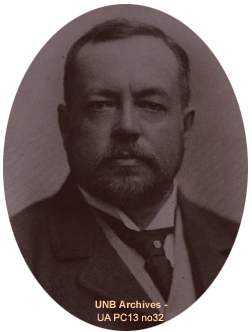|





|
 More than 100 years
after the last railway navvies laid down their mallets, the Chignecto
Ship Railway still fascinates Canadians. Henry Ketchum’s vision
of transporting ships by train over the Isthmus of Chignecto continues
to intrigue engineers and lay people alike. More than 100 years
after the last railway navvies laid down their mallets, the Chignecto
Ship Railway still fascinates Canadians. Henry Ketchum’s vision
of transporting ships by train over the Isthmus of Chignecto continues
to intrigue engineers and lay people alike.
In the history of Canada, railways were inextricably tied to national
development. The 19th century was an age when railroad
tracks ploughed
through nearly impenetrable forests, plunged down mountainsides and
soared over gorges. Consequently, the engineers who built them were the
recipients of public adulation. The completion of the
Canadian Pacific Railway elevated Sanford Fleming and William Cornelius
Van Horne into household names. Among the contemporaries of these
railway giants was the young Fredericton engineer, Henry George Clopper
Ketchum, whose very successful early career suggested he too was headed
for greatness. Then came the collapse of his dream, the Chignecto Ship
Railway Project, and in its aftermath, Ketchum slipped into historical
oblivion.
There are few physical remains of the massive three year construction
project (1888-1891) that brought 4,000 immigrant workers to Amherst,
Nova Scotia, in addition to a crew that included some of the most
distinguished British engineers of the time. Many unanswered
questions remain.
- Was
Henry Ketchum an engineering genius, felled by the lack of imagination
of the people around him?
- Was
his failure just bad timing and bad luck?
- Was
the project an example of Canadian technical innovation betrayed by
loss of government support?
- Was
the idea of a ship railway just folly, an embarrassment best forgotten
in the annals of Canadian history?
- Was
the ship railway doomed to be an entrepreneurial failure?
Since
1945, the UNB Archives has held the Henry
G.C. Ketchum fonds consisting of manuscripts and printed
materials, photographs, technical and architectural drawings, and maps.
Over the years, there has been repeated interest from researchers
captured by Ketchum’s vision. It is this fonds, and its finding
aid, which form the foundation of this virtual exhibit,
generously supplemented by background material designed to expand the
reader’s understanding of the Ship Railway and the individuals involved
in it. Ketchum’s successful early career as a railway engineer in
Canada and Brazil has been given more prominence. Finally, the exhibit
highlights Ketchum’s connection with the University of New Brunswick,
who proudly claim him as the recipient of the first engineering
certificate granted by the institution, and donor of the Ketchum Medal
which annually recognizes the best graduate from the UNB's Dept. of
Civil
Engineering.
|


 More than 100 years
after the last railway navvies laid down their mallets, the Chignecto
Ship Railway still fascinates Canadians. Henry Ketchum’s vision
of transporting ships by train over the Isthmus of Chignecto continues
to intrigue engineers and lay people alike.
More than 100 years
after the last railway navvies laid down their mallets, the Chignecto
Ship Railway still fascinates Canadians. Henry Ketchum’s vision
of transporting ships by train over the Isthmus of Chignecto continues
to intrigue engineers and lay people alike.